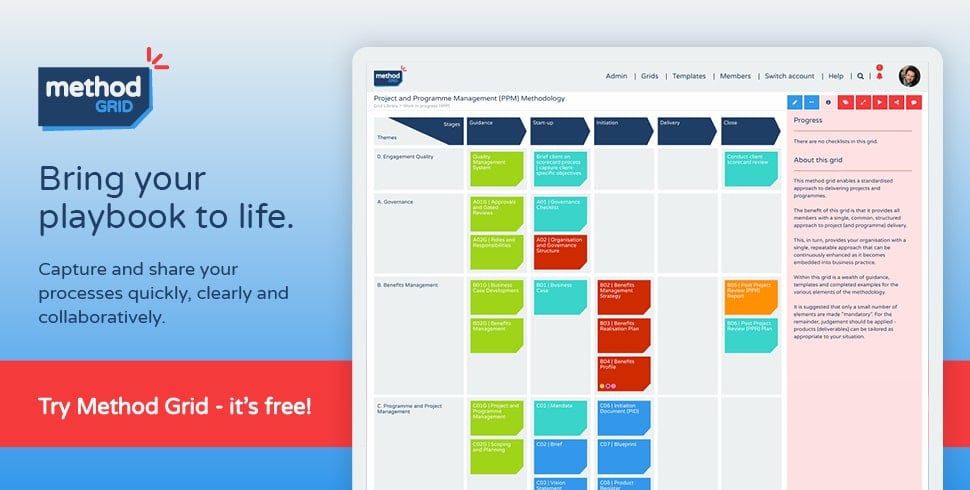People buy from people - Start throwing some STONES - Buddy up - Avoid the failure trap - The current situation - Turn to tomorrow - Obstacles - Now us - Mutual exploration - Solidify! - 90 not 60
Let’s recap. Having read previous blogs in this sub-series, you now understand that this all starts with the question of self-motivation (and time allocation); you also know how important the numbers/ratio process is and you now have a system in place to track people and opportunities through the respective pipelines. You may even, by now, have spent time in the most important of activities – arranging meetings with prospective new clients (see previous blog). Soon, those meetings will start to roll in and, so, it is to this pivotal moment in any sales dialogue that I want to turn next: the sales meeting.
This point in the process should remind you that selling professional services is very distinct from many other forms of business. What is similar to much of business life is that people-buy-from-people. What sets professional service sales aside, however, is that the product is far less tangible and trust-based than a conventional product and, indeed, the outcomes sought may be uncertain; all this needs to be worked through.
I am going to run you through a structure for an introductory meeting that we developed at Moorhouse (using the acronym S.T.O.N.E.S). This, in turn, was our particular modification of a structure SBR Consulting developed based on their consultative sales methodology – QUIS SellingTM (Questions, Understanding, Influence, Solidify). You may well want to develop your own modification and if so, you will be well advised to use an expert sales capability builder/facilitator such as SBR to help develop such systems and, subsequently, train them in to your team. Of course, you will be capturing all such developed methodology on to your proprietary Method Grid platform en route!
As an aside, the “STONES” acronym served another useful purpose for us. There is a proclivity within professional service firms (especially so: management consultants) to over-analyse and over-render presentation materials and proposals – almost to the detriment of actually getting out into the world and just speaking to prospects. “STONES” reminded us of this ineffectual behaviour: “Stop polishing stones – start throwing some!” would be the collegial verbal admonishment.
But before, we turn to a sales meeting structure – a reminder of why having a common approach to the sales meeting is so success-critical. Fundamentally, it gives you a common team-wide reference point that can be continuously reviewed and improved. It also means when you buddy-up in a sales meeting (as is good practice), that you both know exactly where you are in the process (and don’t trip over each other). Finally, and perhaps most importantly, because such approaches are based on years of actual experience – they work; at least, they have the highest chance of enabling you to progress the relationship towards an actual sale.
Before I dive into this, I should emphasise that such a sales meeting approach seeks to address the number one complaint made by prospective clients in relation to professional service sales people: WE TALK TOO MUCH and, as often goes hand-in-hand with this: WE FAIL TO LISTEN.
What I am about to cover will, hopefully, help you avoid this failure trap.
With that point made, let’s step now through the six stages of the STONES sales meeting structure. There is a lot of information in the following diagrams, so take your time to read these through.
Mastering the sales meeting
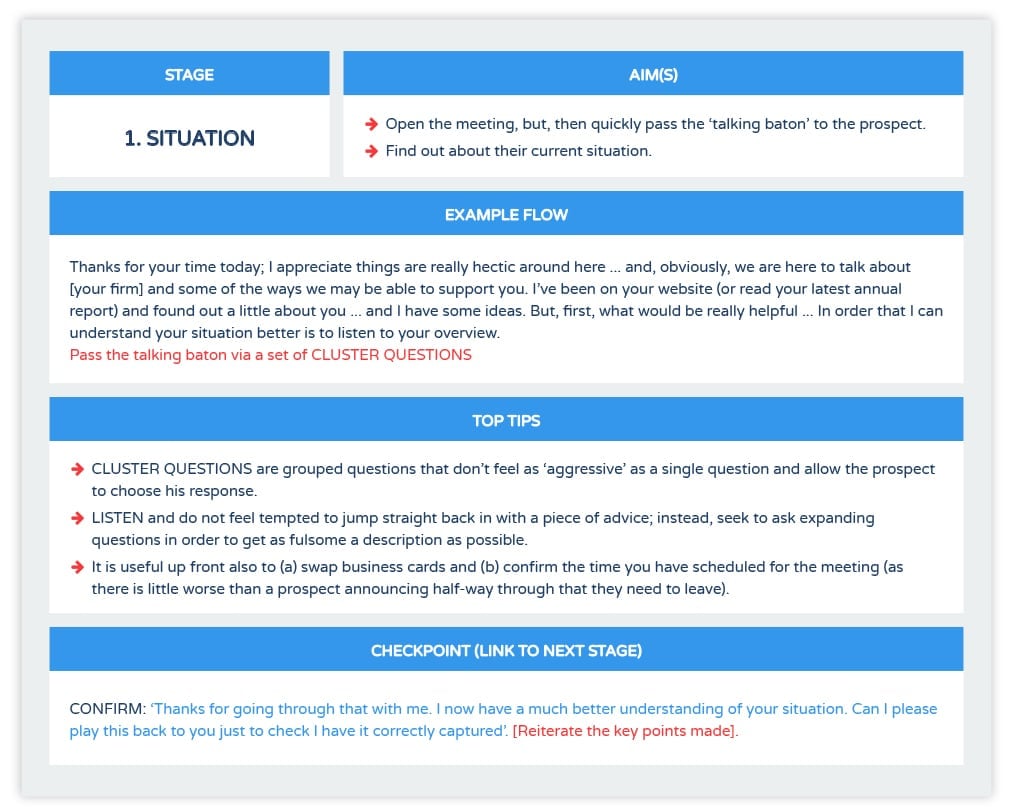
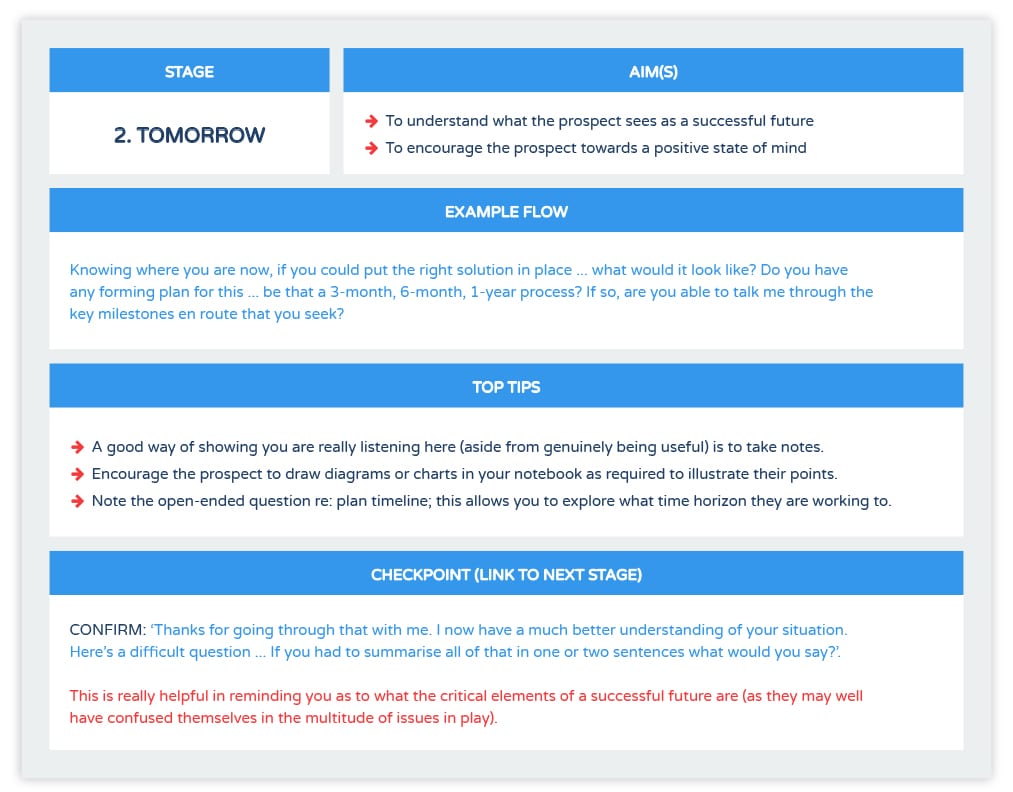
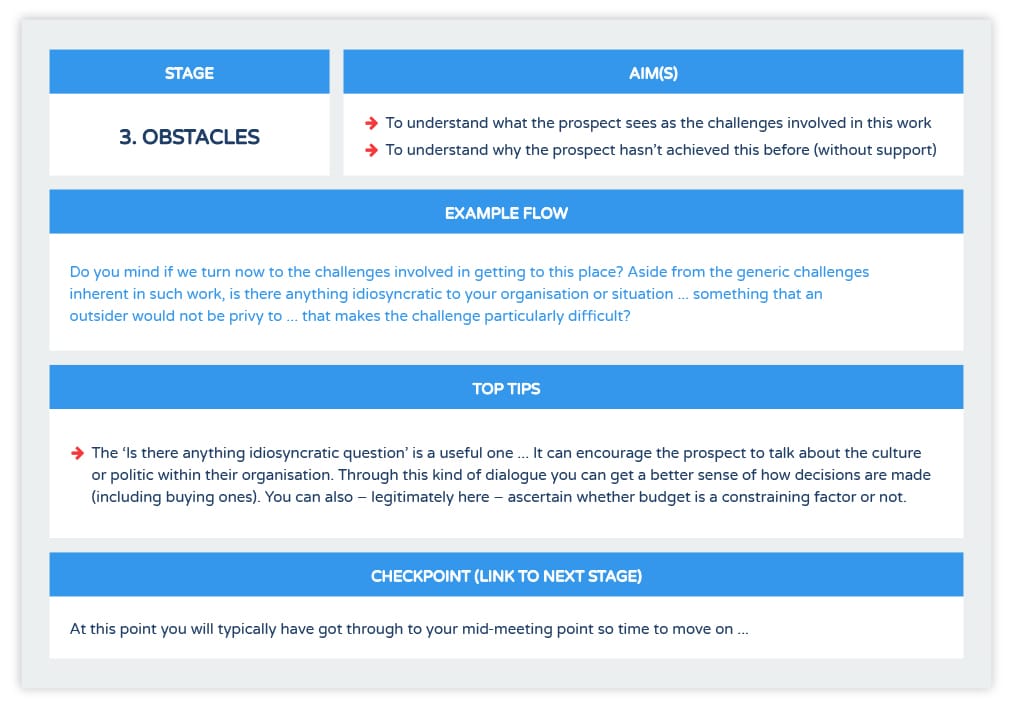
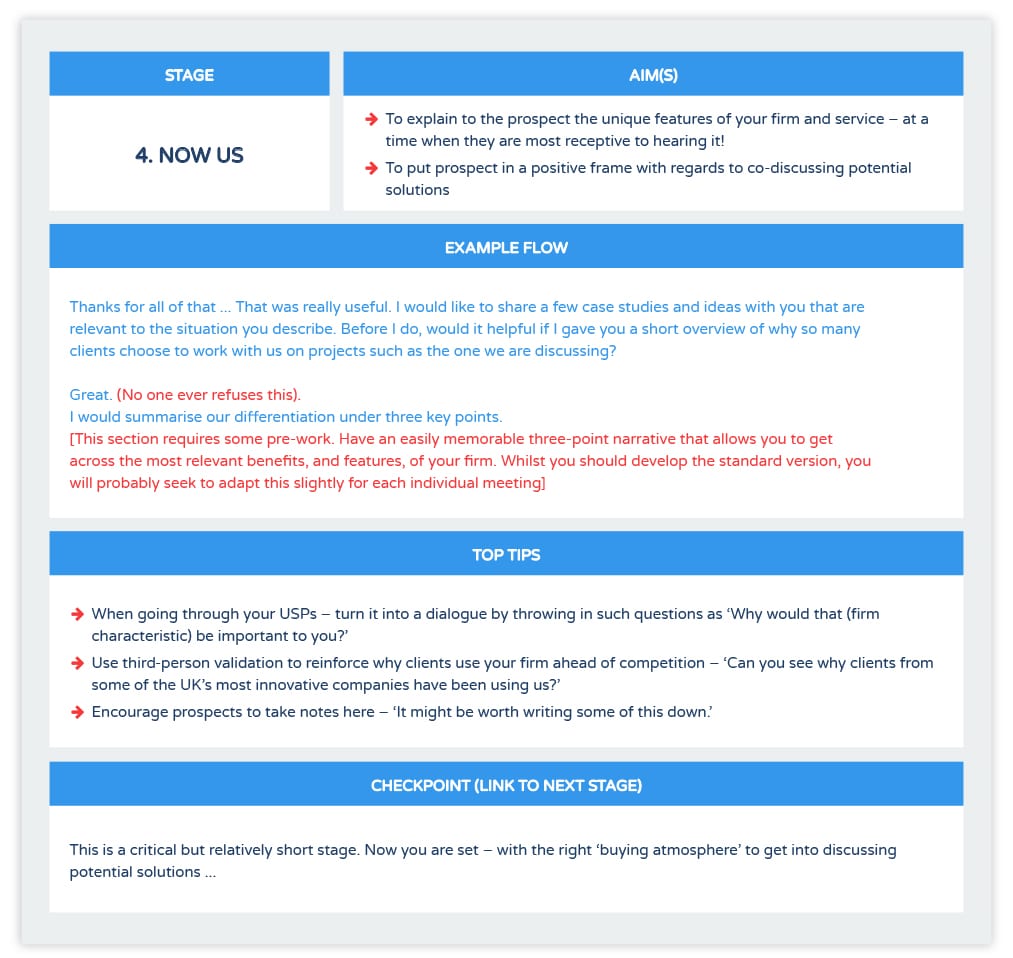
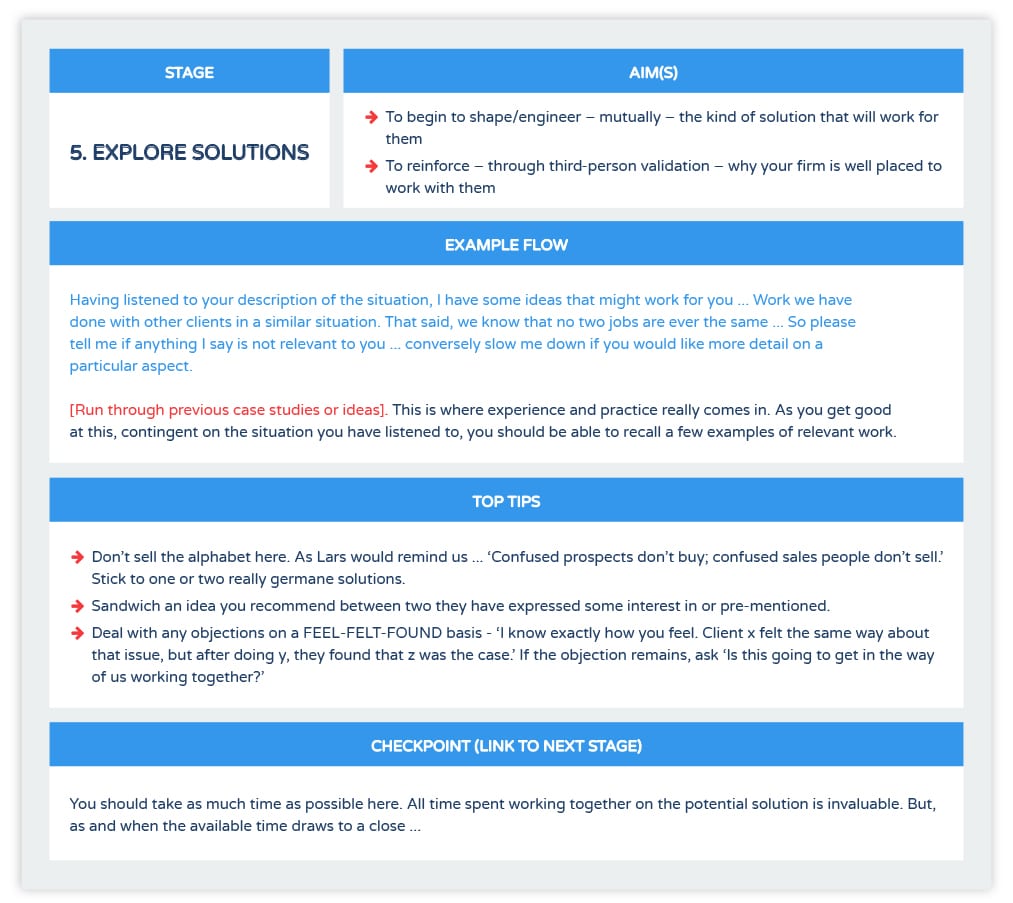
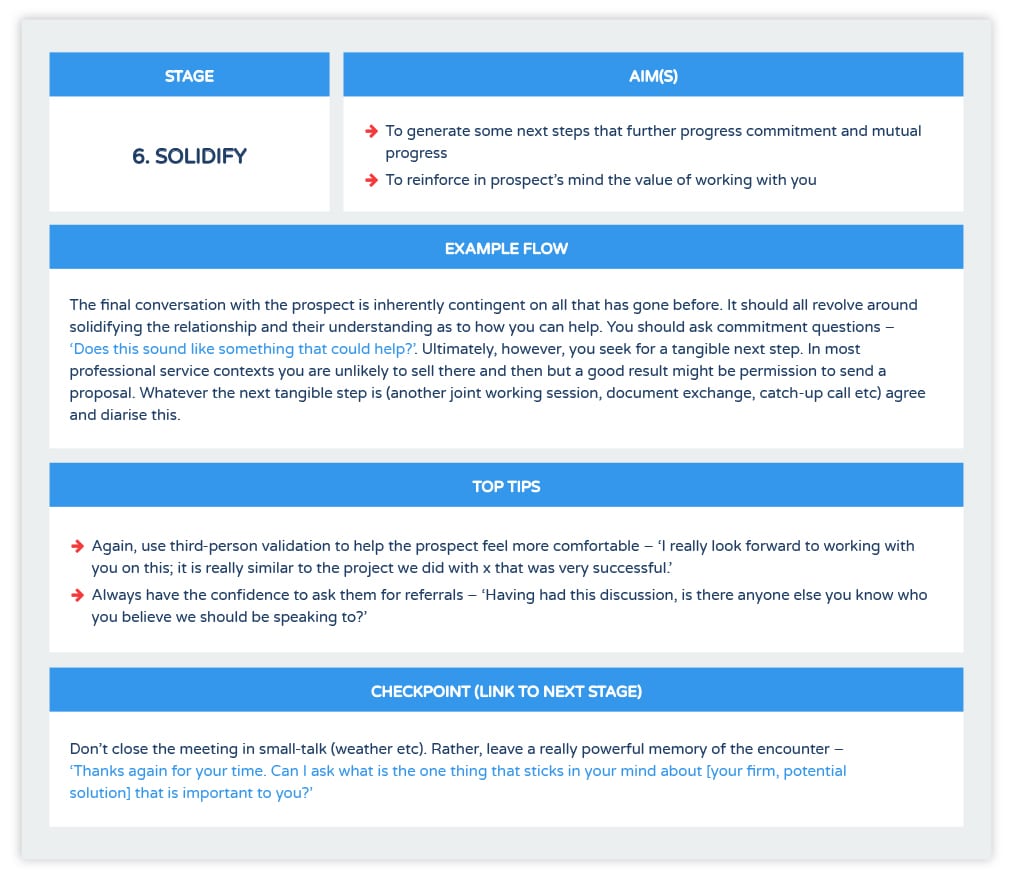
ACTIVITY
Clearly this can only be truly absorbed in the doing. So get out there and try it (or a modified alternative) at your next sales meeting. Take along a colleague and grab a coffee afterwards to talk about how it went, what went well, what could have been improved etc.

 Project and Program Management
Project and Program Management  Project Governance Framework
Project Governance Framework  Benefits Management Framework
Benefits Management Framework 

